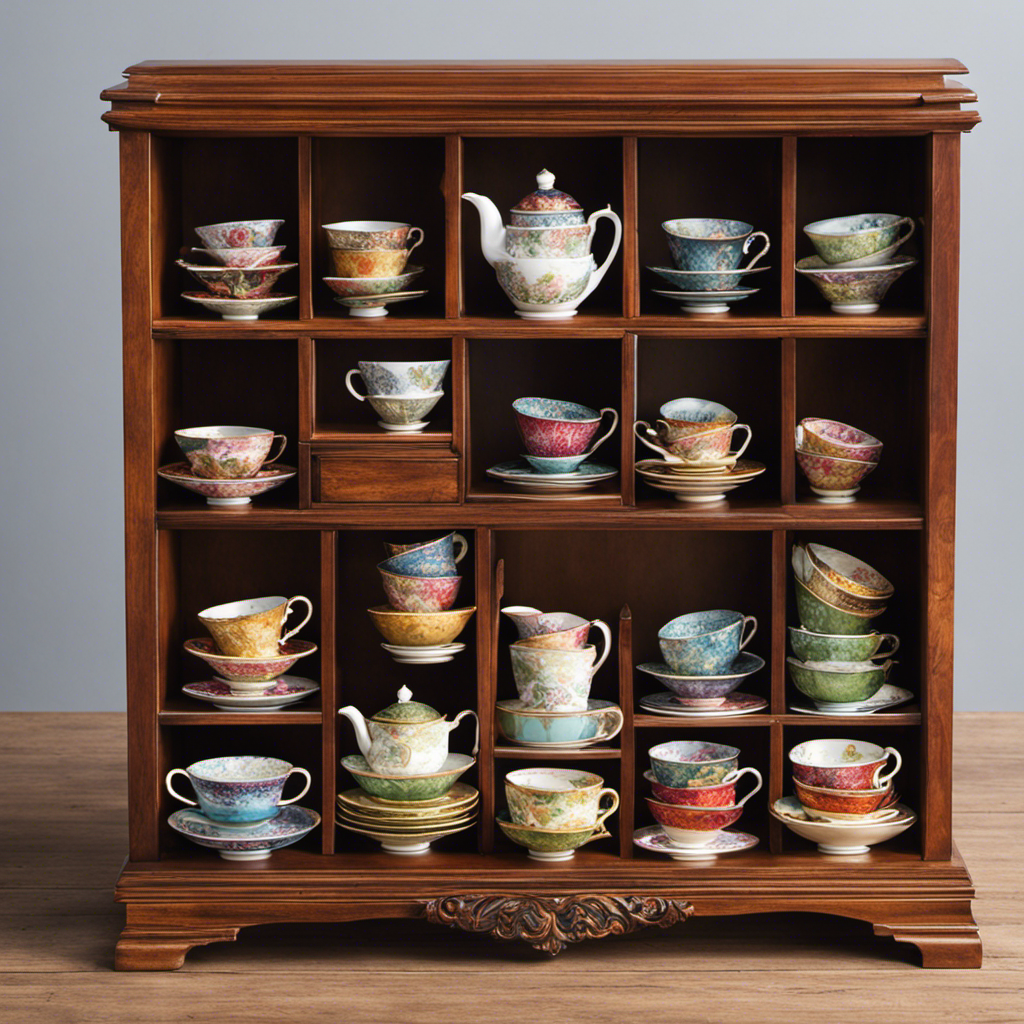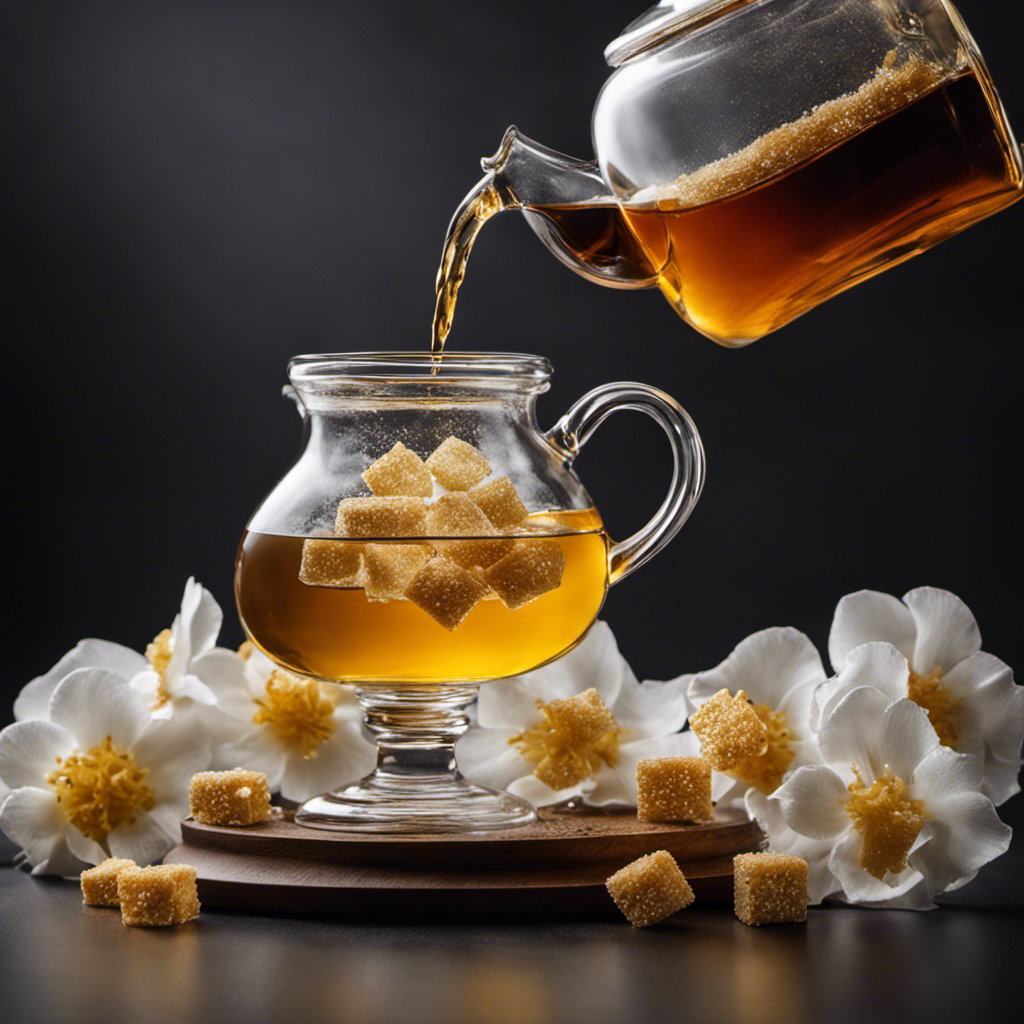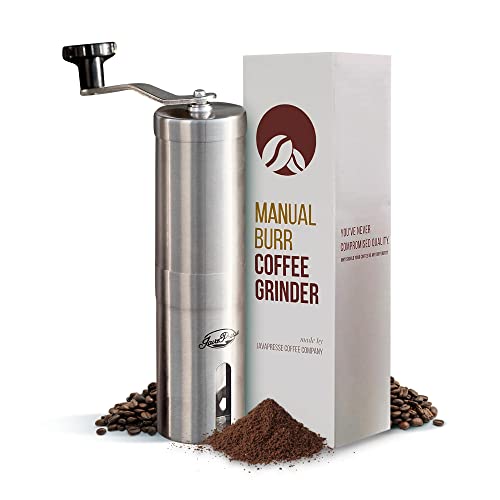Coffee Alternatives And Tea
The Art Of Tea: Exploring Colors And Aging

Ah, tea. The essence of serenity, the cozy sensation in a mug, the gateway to a brief, blissful retreat. Reflecting on tea, it goes beyond its flavor or scent that enchants me. It’s the hues.
The way they change and evolve, like a dance of hues in my teacup. This is the art of tea – an exploration of colors and aging that unveils the true essence of this ancient beverage.
As I sip on my favorite brew, I can’t help but marvel at how tea transforms over time. From the bright, vibrant greens to the rich, velvety blacks, each cup tells a unique story.
And it’s not just the age of the tea that influences its color – the brewing temperature, the type of tea, even the water and vessel used all play a part in this intricate tapestry of shades.
Join me on this journey as we delve into the world of tea colors and aging. Discover the secrets behind the ever-changing hues, and learn how to unlock the full potential of your tea.
From the first steep to the last, let’s savor every moment and embrace the art of tea.
Key Takeaways
- Tea colors change with aging and fermentation, transforming from clear orange to black and opaque.
- Brewing temperature has a significant impact on tea colors, with high temperatures resulting in orange tea colors and lower temperatures yielding yellow or green tea colors.
- Overbrewing can darken red, oolong, and black teas.
- Tea colors can vary based on region, production methods, age of the leaves, oxidation process, and other factors, and can indicate the strength, flavor, quality, and freshness of the tea.
Tea Colors and Aging
Tea becomes darker with aging due to the influence of aging and fermentation, transforming its colors from clear orange to black and opaque.
Exploring tea oxidation and the impact of fermentation on tea colors is like uncovering the secrets of nature’s alchemy. As tea leaves age, they undergo chemical reactions that result in the development of complex flavors and aromas. The oxidation process, caused by enzymes present in the leaves, leads to the breakdown of chlorophyll and the formation of new compounds, giving rise to darker hues.
The longer the fermentation process, the deeper and richer the color becomes. It’s a fascinating journey that takes us from the bright and vibrant shades of youth to the deep, mysterious depths of maturity.
So next time you brew a cup of aged tea, take a moment to appreciate the beauty of its dark, captivating colors, for they are a testament to the transformative power of time and nature.
Brewing Parameters and Effects
When brewing, I adjust the parameters to extract different flavors from the leaves. It’s fascinating how the brewing technique can greatly influence the taste and color of tea.
Here are four key factors to consider when it comes to brewing parameters and their effects:
-
Water temperature: The temperature at which you steep your tea plays a crucial role in determining its color and flavor. Green teas, for example, require lower temperatures to preserve their delicate flavors and vibrant green colors, while black teas benefit from higher temperatures to bring out their full-bodied richness.
-
Steeping time: The length of time you steep your tea also affects its color and taste. Shorter steeping times tend to result in lighter, milder teas, while longer steeping times can lead to darker, stronger brews.
-
Water quality: The quality of the water used for brewing can impact the clarity and taste of the tea. Using filtered or spring water is often recommended to avoid any unwanted flavors or impurities.
-
Tea-to-water ratio: Finding the right balance between the amount of tea leaves and the volume of water used can greatly influence the intensity of the tea’s color and flavor. Experimenting with different ratios can help you discover your preferred strength of brew.
Considering these brewing parameters and their effects can elevate your tea experience, allowing you to fully appreciate the diverse range of colors and flavors that tea has to offer.
Factors Affecting Tea Colors
I find it fascinating how various factors can influence the colors of different types of tea. The significance of tea colors in tea appreciation cannot be overstated. It not only adds visual appeal to the experience but also provides valuable information about the tea itself. One of the key factors that affect tea colors is the impact of processing methods. The way tea leaves are handled and processed can greatly influence the final color of the brew. For example, green teas are known for their vibrant green hues, which are a result of minimal oxidation during processing. On the other hand, black teas undergo a complete oxidation process, resulting in rich amber or dark red colors. By understanding these factors, tea enthusiasts can better appreciate the art of tea and explore the diverse range of colors that tea has to offer.
| Factors Affecting Tea Colors | ||
|---|---|---|
| Processing Methods | Oxidation Level | Tea Type |
| Region of Production | Age of Leaves | Brewing Temperature |
Frequently Asked Questions
How does the aging process affect the flavors of tea?
The aging process significantly impacts the flavors of tea. It involves the transformation of compounds through oxidation and fermentation, resulting in a complex and rich taste. Exploring the impact of storage conditions on tea flavor and analyzing the relationship between tea aging and antioxidant levels can provide valuable insights into the development of flavors over time.
Are there any specific teas that are known for their vibrant colors?
Oh, let me tell you about the vibrant colors of certain tea types! From the bright hues of butterfly pea flower tea to the bold reds of hibiscus tea, these teas not only offer stunning visuals but also a delightful range of flavors. Exploring the relationship between color and flavor in tea is truly a fascinating journey.
Can the brewing temperature affect the aroma of the tea?
Yes, brewing temperature can significantly affect the aroma of the tea. Different brewing techniques and temperatures can enhance or subdue the aroma perception, resulting in a more complex and enjoyable tea experience.
What role does the oxidation process play in determining the color of tea?
The oxidation process of tea, often referred to as "the magic touch," plays a crucial role in determining the mesmerizing hues of tea. It is through this process that the color of tea is transformed, creating a captivating spectrum of shades.
Are there any specific regions known for producing tea with unique and distinct colors?
Yes, there are tea producing regions known for producing tea with unique and distinct colors. Traditional tea making techniques in these regions play a crucial role in creating teas with vibrant and varied colors.
Conclusion
In conclusion, the art of tea is a captivating journey that encompasses the beauty of colors and the wisdom of aging.
Like a vibrant painting, tea colors evolve with each steeping, revealing a stunning spectrum that mirrors its flavor and quality.
Just as time weaves its magic on a canvas, the aging process transforms tea into a rich and complex elixir.
So, let us embark on this sensory adventure, where hues dance and flavors bloom, and discover the kaleidoscope of tea’s true essence.
Arf, an author and an innovative enthusiast of coffee, coffee alternatives, and tea, plays a crucial role as a contributor to the esteemed Cappuccino Oracle platform. Renowned for his curiosity and passion for these captivating beverages, Arf has carved out a unique space for himself in the world of exploration and writing. He realized that coffee, coffee alternatives, and tea are not mere drinks to keep one awake, but universes of flavors and stories waiting to be explored.
Arf’s articles for Cappuccino Oracle blend meticulous research with personal experiences, providing readers with an in-depth understanding of various types of coffee, coffee alternatives, and tea, along with their unique characteristics, cultures, and histories. His honest reviews and engaging narratives guide readers on their own journeys, helping them discover their preferences and find their perfect brew.
Turmeric Tea
How Much Sugar to Tea for Kombucha

As a fan of kombucha, I have often pondered the perfect sugar to tea ratio for making the best batch. It can be challenging to find the right balance between sweetness and fermentation. But don’t worry! This article delves into the science of the sugar-to-tea ratio, important factors to keep in mind, and the ideal ratio for brewing kombucha.
Get ready to take your kombucha game to the next level and avoid common mistakes along the way. Let’s dive in and brew a delicious, healthy batch of kombucha!
Key Takeaways
- The sugar-to-tea ratio is crucial for achieving the right balance of sweetness in kombucha.
- Factors to consider when determining the ideal amount of sugar include the type of tea used, personal taste preferences, and the length of fermentation time.
- The recommended sugar-to-tea ratio for kombucha is typically 1 cup of sugar to 4-6 bags of tea.
- Experimenting with adjusting the sugar-to-tea ratio allows customization of the flavor of kombucha.
Understanding the Sugar-to-Tea Ratio
The sugar-to-tea ratio is crucial for achieving the right balance of sweetness in kombucha.
When brewing kombucha, several factors come into play when determining the ideal amount of sugar to add to the tea.
First, consider the type of tea you are using. Black tea tends to have a stronger flavor, so it can handle a higher sugar content. Green tea, on the other hand, is more delicate and may require less sugar.
Second, consider your personal taste preferences. If you prefer a sweeter kombucha, you may want to increase the sugar-to-tea ratio slightly.
Lastly, the brewing time also affects the sweetness. The longer you let your kombucha ferment, the more the sugar will be consumed by the SCOBY, resulting in a less sweet end product.
Factors to Consider for Sugar-to-Tea Ratio
When figuring out your sugar-to-tea ratio for brewing kombucha, you should take into account several factors.
Factors to consider include the type of tea used, the desired sweetness level, the size of your brewing vessel, the temperature at which you ferment the kombucha, and the length of fermentation time.
Each of these factors plays a role in determining the ideal sugar-to-tea ratio for your kombucha. For example, different types of tea may require different amounts of sugar to achieve the desired fermentation process.
Additionally, the temperature at which you ferment your kombucha affects the rate of fermentation and the amount of sugar consumed by the SCOBY.
Therefore, it is important to carefully consider these factors when determining the sugar-to-tea ratio to ensure the best results in your kombucha brewing journey.
Recommended Sugar-to-Tea Ratio for Kombucha Brewing
To achieve the best results in your kombucha brewing journey, it’s crucial to carefully consider factors like the type of tea used and the desired level of sweetness when determining the ideal sugar-to-tea ratio.
The recommended sugar-to-tea ratio for kombucha is typically 1 cup of sugar to 4-6 bags of tea. This ratio provides enough nutrients for the SCOBY (Symbiotic Culture of Bacteria and Yeast) to ferment properly, resulting in a balanced and flavorful brew.
It’s important to note that the fermentation time for kombucha can vary depending on factors like temperature and personal preference. Generally, a fermentation period of 7-14 days is recommended for optimal flavor development.
If you’re looking to explore alternative sweeteners for your kombucha, options like honey, maple syrup, or stevia can be used as substitutes for sugar. However, it’s important to adjust the amount accordingly to maintain the proper fermentation process.
Now that we’ve established the recommended sugar-to-tea ratio, let’s dive into adjusting it to suit your taste preferences.
Adjusting the Sugar-to-Tea Ratio for Taste Preferences
If you’re looking to customize the flavor of your brew, you can experiment with adjusting the sugar-to-tea ratio to suit your taste preferences. Finding the perfect balance of sweetness is a personal journey, and it may take some trial and error to get it just right.
Here are some tips to help you along the way:
-
Start by following a standard recipe and gradually decrease or increase the amount of sugar to your liking.
-
Keep in mind that reducing the sugar may result in a more tart and less sweet kombucha.
-
If you prefer a sweeter brew, you can add additional sweeteners like honey, fruit juice, or flavored syrups.
-
Consider using different types of tea to enhance the flavor profile of your kombucha. Green tea, black tea, and herbal teas all offer unique taste experiences.
-
Don’t be afraid to get creative and experiment with different combinations of flavors to find your perfect blend.
Common Mistakes to Avoid With the Sugar-To-Tea Ratio
One mistake to avoid is rushing the process and not taking the time to find the perfect balance of sweetness for your taste preferences.
When it comes to making kombucha, the sugar-to-tea ratio is crucial for a successful fermentation. Many people make the mistake of using too much or too little sugar, which can affect the flavor and fermentation process.
It’s important to understand the role of sugar in kombucha. Sugar acts as the food source for the SCOBY (Symbiotic Culture of Bacteria and Yeast) during fermentation. It provides the necessary energy for the bacteria and yeast to convert the tea into kombucha.
However, using too much sugar can result in an overly sweet brew, while using too little sugar can impede the fermentation process. Finding the right balance is key to achieving a well-balanced and flavorful kombucha.
Experimenting with different sugar-to-tea ratios and monitoring the taste and fermentation time can help you find the perfect sweetness for your taste preferences.
Conclusion
In conclusion, understanding the sugar-to-tea ratio is crucial for successful kombucha brewing. It not only affects the taste but also the fermentation process and the health of the SCOBY.
The recommended ratio is 1 cup of sugar for every gallon of tea. However, it’s important to adjust this ratio according to personal taste preferences.
Interestingly, studies have shown that reducing the sugar content in kombucha can lead to a decrease in the alcohol content, making it a healthier alternative to sugary beverages.
So, experiment with the sugar-to-tea ratio and enjoy the benefits of homemade kombucha!
In the vast and diverse world of coffee, coffee alternatives, and tea, Olivia has found her calling. As an author and a dedicated coffee and tea aficionado, her work for Cappuccino Oracle reflects her profound love and understanding of the intricate complexities found within these beverages. Olivia’s passion for the subject serves as both a catalyst for her creativity and a connection point with her audience.
Olivia’s appreciation for coffee, coffee alternatives, and tea blossomed at an early age. She discovered that these beverages invigorated her senses and stimulated her creative spirit. From the nuanced flavors of single-origin roasts to the captivating narratives intertwined with coffee, coffee alternatives, and tea trade and culture, Olivia found an unlimited source of inspiration in her daily cup.
Her love for these beverages and her talent for storytelling eventually converged at Cappuccino Oracle. As an author, Olivia’s mission is to illuminate the intricate tapestry that makes up the world of coffee, coffee alternatives, and tea. Her articles span a diverse range of topics, encompassing everything from the unique flavors of different brews to the sociocultural history intertwined with their cultivation and consumption.
Turmeric Tea
What Is the Ph Level of Kombucha Tea

As someone who is intrigued by kombucha, I have constantly been fascinated by the pH level of this effervescent, fermented beverage. Come along with me as we explore the science behind kombucha’s pH level, examining the various factors that impact it and discovering the optimal pH range for fermentation.
Discover how to measure the pH level of your own kombucha brew and learn about the impact of pH on both taste and health benefits.
Get ready to unlock the secrets of kombucha’s pH level!
Key Takeaways
- The pH level of Kombucha tea typically ranges from 2.5 to 3.5, which contributes to its tangy taste.
- Factors such as fermentation time and temperature can affect the pH level of Kombucha tea, with longer fermentation times leading to increased acidity and higher temperatures speeding up fermentation.
- The ideal pH range for Kombucha fermentation is between 2.5 to 4.5, as it promotes optimal conditions for fermentation, SCOBY growth, and inhibits harmful bacteria and mold.
- Measuring the pH level of Kombucha tea can be done using pH strips or a pH meter, with a range of 0 to 14, and a pH range of 2.5 to 3.5 is considered ideal for Kombucha.
The Science Behind Kombucha’s Ph Level
The pH level of Kombucha’s tea is influenced by the fermentation process. During the brewing process, sweetened tea is combined with a symbiotic culture of bacteria and yeast (SCOBY). As the SCOBY consumes the sugar in the tea, it undergoes microbial activity, leading to the production of various organic acids.
These organic acids, such as acetic acid, lactic acid, and gluconic acid, contribute to the tangy taste and low pH of Kombucha. The pH level typically ranges from 2.5 to 3.5, which is considered acidic. This acidic environment is crucial for the growth and survival of the beneficial bacteria and yeast in Kombucha. It also helps prevent the growth of harmful bacteria and molds.
Therefore, the pH level of Kombucha’s tea is a result of the fermentation process and the microbial activity involved.
Factors Affecting the Ph of Kombucha Tea
To control the acidity of your kombucha, you’ll want to pay attention to factors like fermentation time and temperature. These two factors play a crucial role in determining the pH level of your kombucha tea.
Fermentation time refers to the duration for which you allow the tea to ferment. The longer the fermentation time, the more acidic the kombucha becomes.
Temperature also affects the fermentation process. Higher temperatures speed up fermentation, resulting in a faster decrease in pH levels. Conversely, lower temperatures slow down fermentation, leading to a slower decrease in acidity.
It’s important to find the right balance between fermentation time and temperature to achieve the desired pH level in your kombucha. By controlling these factors, you can create a perfectly balanced and delicious batch of kombucha.
Understanding the Ideal Ph Range for Kombucha Fermentation
You should aim for a pH range that promotes optimal fermentation of your kombucha. The ideal fermentation conditions for kombucha typically fall in the range of 2.5 to 4.5. Maintaining the right pH level is crucial as it directly impacts the growth and activity of the SCOBY (symbiotic culture of bacteria and yeast) responsible for fermenting the tea.
Here are three key points to consider regarding the impact of pH on kombucha SCOBY growth:
- Lower pH levels inhibit the growth of harmful bacteria and mold, ensuring a healthy fermentation process.
- A pH that is too low or too high can hinder the SCOBY’s ability to convert sugar into beneficial acids and carbon dioxide, affecting the taste and quality of the final product.
- Regular monitoring and adjustment of pH levels during fermentation is essential to maintain a stable environment for the SCOBY’s growth and activity.
Understanding the ideal pH range for kombucha fermentation is crucial for achieving the desired flavor and health benefits in your brew. Now, let’s explore how to measure the pH level of kombucha tea.
How to Measure the Ph Level of Kombucha Tea
Measuring the pH of your kombucha is a simple process that involves using a pH strip or a pH meter.
To determine the acidity of your kombucha, you can dip a pH strip into the liquid and compare the color change to the provided chart.
The pH meter, on the other hand, gives you a more precise reading by directly measuring the pH level.
The acidity of kombucha is typically measured on a scale of 0 to 14, with a pH of 7 being neutral.
Kombucha usually has a pH range of 2.5 to 3.5, which indicates its high acidity.
This level of acidity is crucial for the fermentation process and contributes to the tangy taste of the tea.
Effects of Ph on the Taste and Health Benefits of Kombucha
When it comes to the taste and health benefits of your kombucha, the pH of the tea plays a significant role. The pH level of kombucha affects both its flavor and its probiotic content.
Here are some key points to consider:
-
Flavor: The pH level of kombucha determines its acidity, which can greatly impact its taste. A higher pH (less acidic) can result in a sweeter flavor, while a lower pH (more acidic) can make it more tart or sour.
-
Probiotic Content: The pH level also affects the growth and activity of beneficial bacteria and yeast in kombucha. A pH level around 3.0 to 4.5 is ideal for promoting the production of probiotics and ensuring their viability.
Understanding the relationship between pH and the flavor and probiotic content of kombucha can help you create a brew that suits your taste preferences and maximizes its health benefits.
Conclusion
In conclusion, understanding the pH level of kombucha tea is crucial for achieving the perfect fermentation and reaping its health benefits. By measuring the pH level, we can ensure that the tea is within the ideal range, allowing the beneficial bacteria and yeast to thrive.
This delicate balance not only affects the taste of the tea but also its potential health benefits. So, next time you indulge in a glass of kombucha, remember the science behind its pH level and savor the suspenseful dance of flavors and beneficial microbes within.
Justin is a seasoned author, coffee and tea enthusiast, and an essential member of the Cappuccino Oracle team. With a keen appreciation for the complexities of coffee, coffee alternatives, and tea, Justin has dedicated his professional career to exploring these realms and sharing his insights with readers worldwide.
Justin’s immersion in the world of coffee, coffee alternatives, and tea began at a young age, kindling a passion that extended beyond mere consumption. This love for these beverages led him to combine his talent for writing with his devotion to coffee and tea, bringing him to Cappuccino Oracle as a dedicated author.
Mushroom Coffee
Discover the Magic of Mushroom Coffee: Ryze Organic Unveiled

Welcome to the fascinating world of mushroom coffee, where ancient wisdom meets modern wellness. In this comprehensive guide, we’ll explore the revolutionary Ryze Organic mushroom coffee, a blend that’s taking the functional beverage market by storm. Whether you’re a coffee aficionado or a health enthusiast, prepare to be amazed by the unique benefits and flavors of this innovative brew.
What is Mushroom Coffee?
Mushroom coffee is a cutting-edge beverage that combines the rich, robust flavors of coffee with the powerful health benefits of medicinal mushrooms. This unique fusion creates a drink that not only energizes but also supports overall well-being. Learn more about the health benefits of functional beverages.
The Science Behind Mushroom Coffee
The magic of mushroom coffee lies in its synergistic blend of coffee and medicinal mushrooms. These fungi have been used for centuries in traditional medicine and are now making a comeback in the wellness world. Ryze Organic harnesses the power of mushrooms like Lion’s Mane, Cordyceps, and Reishi, each offering unique health benefits.
Key Benefits of Medicinal Mushrooms in Ryze Organic
- Cognitive Function Support: Lion’s Mane mushroom stimulates nerve cell growth and improves cognitive function in patients with mild cognitive impairment.
- Immune System Boost: Reishi mushroom enhances the body’s natural defense against infection and disease, increasing the production of white blood cells.
- Stress Reduction: Cordyceps mushroom reduces symptoms of anxiety and depression in patients with chronic stress.
- Improved Energy and Focus: Cordyceps supplementation improves exercise performance and reduces fatigue, while Lion’s Mane increases the production of neurotransmitters involved in regulating energy and focus.
Curious about the science behind these incredible benefits? Dive deeper into Coffee Lovers 101 coffee guides to learn more.
Ryze Organic: A Closer Look
Ryze Organic is at the forefront of the mushroom coffee revolution. This innovative company is committed to delivering high-quality, organic products that support both health and sustainable practices.


Ryze Organic coffee is designed with your health in mind. Each serving contains only 1g of total carbohydrates and 0g of protein, making it an excellent choice for those following intermittent fasting or low-carb diets. With 48mg of caffeine per cup, it provides a gentle energy boost without the jitters often associated with traditional coffee.
Want to know more about Ryze Organic’s product range and features? Check out Coffee Lovers 101 detailed Ryze Coffee guide.
Brewing and Enjoying Mushroom Coffee
Brewing Ryze Organic mushroom coffee is a breeze, and the result is a smooth, flavorful cup that might just become your new favorite morning ritual. Here are some tips to get you started:
Recommended Brewing Methods for Ryze Organic
For more brewing techniques and tips, be sure to explore Coffee Lovers 101 comprehensive brewing guides.
Health and Wellness Aspects of Ryze Organic
Ryze Organic mushroom coffee is more than just a tasty beverage – it’s a powerhouse of health benefits. Here’s what you can expect:
- Enhanced cognitive function and focus
- Sustained energy without crashes
- Improved immune system support
- Reduced acidity compared to regular coffee
- Gentle on the stomach
Interested in learning more about how coffee can support your health journey? Dive into Coffee Lovers 101 health and wellness section for in-depth articles and tips.
Is Mushroom Coffee Right for You?
If you’re looking to elevate your coffee experience while supporting your health goals, Ryze Organic mushroom coffee might be the perfect choice. It offers a unique blend of flavor and function that can seamlessly integrate into your daily routine.


Ready to embark on your mushroom coffee journey? Why not start by trying some creative recipes? Coffee Lovers 101 coffee recipes section is full of inspiring ideas to help you make the most of your Ryze Organic blend.
Conclusion: Embrace the Mushroom Coffee Revolution
Ryze Organic mushroom coffee represents a new frontier in the world of functional beverages. By combining the beloved ritual of coffee drinking with the powerful benefits of medicinal mushrooms, it offers a unique way to support your health and wellness goals without sacrificing flavor or enjoyment.
Whether you’re looking to boost your productivity, support your immune system, or simply enjoy a delicious cup of coffee with added benefits, Ryze Organic has something to offer. So why not give it a try? Your taste buds – and your body – might just thank you.
Remember, the journey to better health and wellness is ongoing. Keep exploring, keep learning, and most importantly, keep enjoying every sip of your coffee adventure!
In the vast and diverse world of coffee, coffee alternatives, and tea, Olivia has found her calling. As an author and a dedicated coffee and tea aficionado, her work for Cappuccino Oracle reflects her profound love and understanding of the intricate complexities found within these beverages. Olivia’s passion for the subject serves as both a catalyst for her creativity and a connection point with her audience.
Olivia’s appreciation for coffee, coffee alternatives, and tea blossomed at an early age. She discovered that these beverages invigorated her senses and stimulated her creative spirit. From the nuanced flavors of single-origin roasts to the captivating narratives intertwined with coffee, coffee alternatives, and tea trade and culture, Olivia found an unlimited source of inspiration in her daily cup.
Her love for these beverages and her talent for storytelling eventually converged at Cappuccino Oracle. As an author, Olivia’s mission is to illuminate the intricate tapestry that makes up the world of coffee, coffee alternatives, and tea. Her articles span a diverse range of topics, encompassing everything from the unique flavors of different brews to the sociocultural history intertwined with their cultivation and consumption.
-

 Americano4 weeks ago
Americano4 weeks agoHow to Make Americano With Moka Pot
-

 Americano2 weeks ago
Americano2 weeks agoHow to Make Korean Iced Americano
-

 Americano4 weeks ago
Americano4 weeks agoHow to Make Iced Americano With Instant Coffee
-

 Americano4 weeks ago
Americano4 weeks agoHow to Make Americano With Bialetti
-

 Americano4 weeks ago
Americano4 weeks agoHow to Make Dutch Bros Americano
-

 Americano6 days ago
Americano6 days agoHow to Make an Iced Americano With Nespresso
-

 Americano2 weeks ago
Americano2 weeks agoHow Many Shots of Espresso for 16 Oz Americano
-

 Americano4 weeks ago
Americano4 weeks agoHow to Make a Hazelnut Americano
















